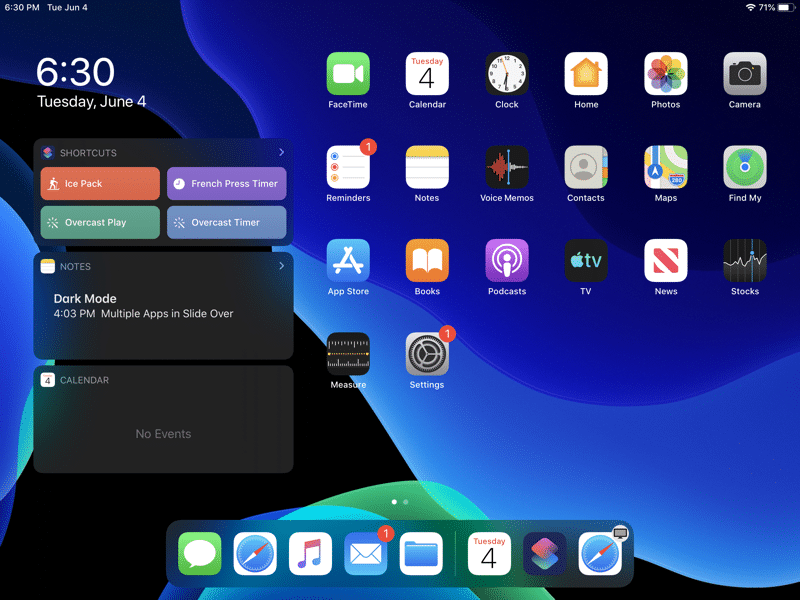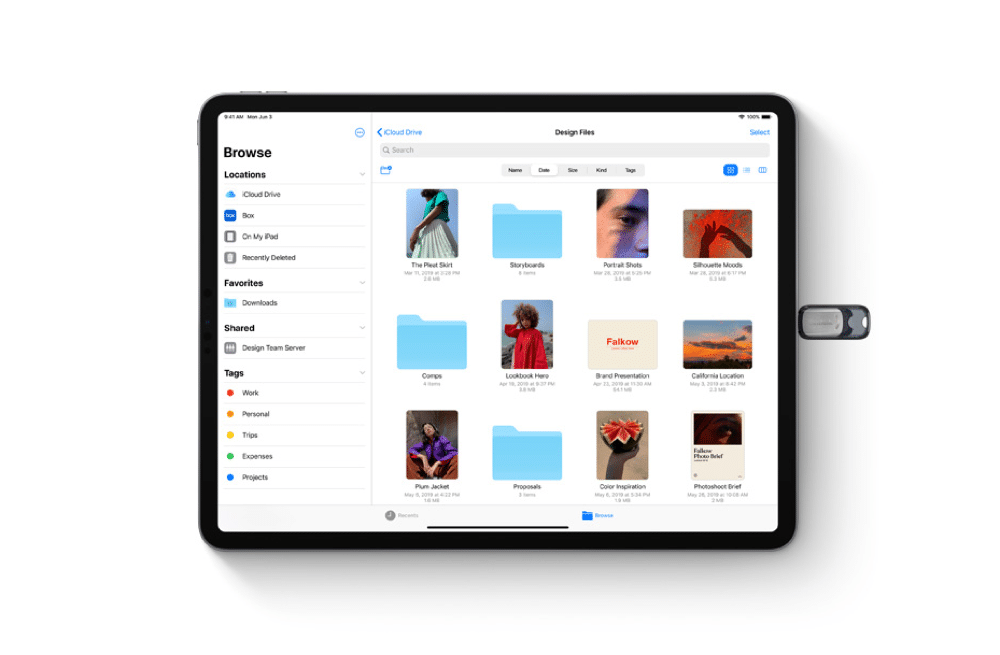
iOS 13 and iPadOS 13 are both big upgrades for iPhones and iPads around the world, packing a bunch of new features, performance fixes and stability improvements. However, not everything Apple showed off at WWDC 2019 was new and shiny.
Some of the features announced and released have been “borrowed” from other platforms, mainly Android. Now, this isn’t a bad thing. Good features should be copied. As Steve Jobs once quoted Pablo Picasso; “Good artists copy, great artists steal.”
Removable Drive Support

Android has been boasting OTG USB support for years now, but not every device out there supports it. While most modern smartphones do, some lower-end handsets do not. With iPad OS 13, Apple is adding support for removable drives via the iPad’s USB-C port, meaning you can plug in your thumb drives and hard drives all you want.
Thanks to this, apps are now able to integrate this into their workflows, like with Lightroom that now allows importing pictures right from your SD card of your camera (if you have an adapter, per Apple usual).
Swipe Keyboard
Originally a “Swype keyboard” feature, it has crippled its way into almost every OS out there, from Android to Windows 10. The feature that allows you to swipe your finger over the keyboard instead of tapping it was popularised by Windows Phone 8.1 where it went mainstream, with Android’s stock keyboards adopting it not long after.
With iOS 13 and iPadOS 13, Apple has finally added the feature to the stock iOS keyboard. Previously, users could get this feature using third-party keyboards like Google’s Gboard. A lot of iOS users are afraid of using third-party keyboards due to the potential privacy and security risks involved. Apple’s keyboard has been well trusted over the years so it’s nice to see it evolve further.
Widgets on the Home screen

While widgets aren’t a new feature in iOS, iPad OS further improves the feature by allowing users to have widgets right on their home screen. This, as well as the idea of widgets, was popularised by Android and now it has finally made its way to the iPad. Unfortunately, this isn’t the case with iOS, where you still need to go to the leftmost page in order to see information at a glance.
The widgets look and feel great on iPadOS, making it a great and very welcome addition to the previously boring, bland and comically poorly spaced iPad home screen. Have you seen iOS 12 on an iPad Pro? It looks like someone flattened an iPhone to a 12.9″ form factor.
Dark Mode
While dark mode isn’t originally an Android feature and it is yet to make a proper official debut with Android Q this fall, dark mode has existed on a plethora of OEM skins on Android, being first introduced on smartphones with Windows Phone 7. OEMs like Samsung already have a dark mode toggle in Android 9.0 Pie and we only expect this to be even better implemented with Android Q’s release.

The dark mode will help your OLED iPhone save battery by a huge margin, as OLED technology allows individual pixels to be entirely turned off. This won’t be the case on the iPhone XR or the iPad, but at least it won’t blind you at night and it looks kinda cool.
Download Manager
This isn’t even an Android feature. It’s a basic, standard OS feature that virtually every PC, smartphone, watch, gaming console, microwave and what not. Even Samsung’s Smart Fridges can download files. Finally, it’s here for iOS 13 and iPadOS 13. This was a much-needed improvement that users have been begging Apple to add since the iPhone originally launched 12 years ago.
Just like with any other OS, you’ll be able to download files and pick the location you want to save them to, right from Safari. This is integrated with the Files app that saw its debut with iOS 11 but was pretty useless until now. People have been complaining, and Apple listened, as seems to be the theme of those updates.
Desktop-Class Browsing with Safari
While Android smartphones don’t offer proper desktop browsing, and Android tablets are dead, Chrome OS has become the new tablet king in the Android ecosystem. Sure, Chrome OS isn’t Android, but it’s very close thanks to it’s Linux kernel, Android App Support, and very similar UI. Desktop-class browsing on the iPad is actually a response to Chromebooks and their ultra-cheap access to full websites.
The new Safari in iPadOS 13 allows you to easily and smoothly browse websites like Google Docs, YouTube, WordPress and much more. A lot of websites would previously show an “unsupported browser” warning as the iPad’s browser wasn’t able to handle full websites.
Street View

Google has had “Street View” in their Maps app for years. Maybe for more than a decade. Apple is finally implementing the same feature, with some twists and enhancements, to the stock Apple Maps app on iPadOS 13 and iOS 13. Apple Maps was poorly received as it was severely lacking in features and accuracy compared to Google Maps. Those days are long gone, as Apple has finally managed to deliver the features users use the most, and even some that Google is yet to implement.
Conclusion
It’s not a bad thing that Apple is copying features from other platforms. It’s a great thing. Good ideas should be shared as that lets everyone have the best possible experience on their favourite platform. iOS 13 and iPadOS 13 aren’t the first to copy Android, and not the last either. Android has and will continue to copy iOS in certain aspects too.
Did we miss any features? What are some other features that you wished Apple copied for iOS 13 from Android? Drop a comment below and let us know!